The BlackBerry PlayBook Review
by Anand Lal Shimpi on April 13, 2011 9:00 PM EST- Posted in
- Tablets
- Smartphones
- RIM
- BlackBerry
- PlayBook
- Mobile
The PlayBook Browser
Two years ago RIM acquired Torch Mobile, a development house that happened to be a significant contributor to the WebKit project. WebKit also happens to be the foundation for both Google Chrome and Safari (both Mac and iOS versions). Torch Mobile had its own WebKit based browser called Iris, which eventually got folded into BlackBerry OS 6.0 and launched with the BlackBerry Torch.
The PlayBook expands upon Torch Mobile's work with one of the strongest parts of the BlackBerry tablet experience. The PlayBook's browser technically supports tabs however the tab bar isn't always visible as it is with Honeycomb. The PlayBook handles browsing multiple web pages better than the iPad, but not nearly as well as the Xoom.
Scrolling is incredibly smooth, even on Flash enabled web pages. Scroll down too quickly and you'll get an empty screen that takes a moment to catch up with your scrolling. It's not uncommon to see this on iOS, it happens less with the iPad 2 and it seems to happen more with the PlayBook.
Web page compatibility is ridiculously good with the PlayBook's browser, partially due to RIM's excellent implementation of hardware accelerated Flash 10.2. Corner cases that wouldn't work on Android or iOS work perfectly on the PlayBook. While I personally prefer the UI of Honeycomb's browser and the size/screen of the iPad 2, the PlayBook probably offers the best browsing experience from a pure software standpoint of any of the tablets.
RIM's tablet browser passes the Acid3 test and scores higher on the HTML5test than both the iPad 2 and Honeycomb. The PlayBook user agent comes up as: Mozilla 5.0 (PlayBook; U; RIM Tablet OS 1.0.0; en-US) AppleWebKit/534.8 (KHTML, like Gecko) Version/0.0.1 Safari/534.8+.
Nearly all websites treat the PlayBook as a desktop browser and don't force you to a mobile version of the site. This is true for video sites as well, like Hulu and YouTube.
Having full Flash functionality built in to the browser is nice. You can disable Flash entirely if you want to, but leaving it enabled doesn't really impact performance all that much - even scrolling with Flash ads in place remains pretty smooth.
Sites that depend entirely on Flash work on the PlayBook, although controlling pure Flash sites can be a problem. Case in point: Pandora. The web version of Pandora is fully functional on the PlayBook, albeit slow to load. The trouble comes in when you try to use Pandora's integrated scroll bar or actually switch stations. Pandora is optimized for a mouse driven experience, not a touch UI, resulting in a lot of frustrating tapping and really slow scrolling. It's workable, but definitely not desirable.
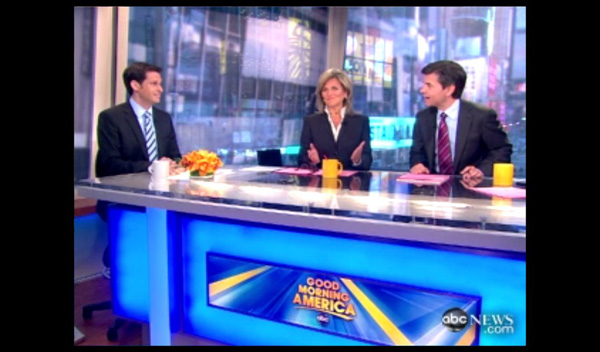
This is full screen Flash on the PlayBook
Flash video players also work on the the PlayBook within its browser. I was reading an article on abcnews.com the other day with an embedded video. I just tapped the video and it started playing immediately. The same for embedded Hulu videos in Facebook. The YouTube website also works, although RIM ships the PlayBook with a dedicated YouTube client for better browsing.
The problem with embedded Flash video is the same as the Pandora issue: control. You can't really hover to expose controls with a touchscreen so what you end up doing is a lot of quick tapping to try and bring up controls, change the setting you want and get back to playing the video. It's frustrating and doesn't work all of the time. None of this is RIM's fault, but now that tablets are at the point where they can start to behave like notebook/desktops web developers will have to rethink the way they build websites. The web is still the unifying platform between all OSes, it's just a few steps behind in becoming touch optimized.


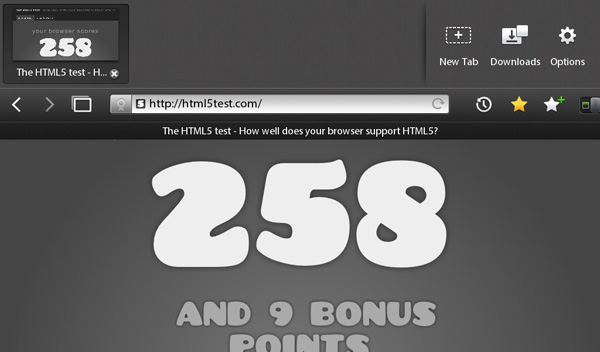
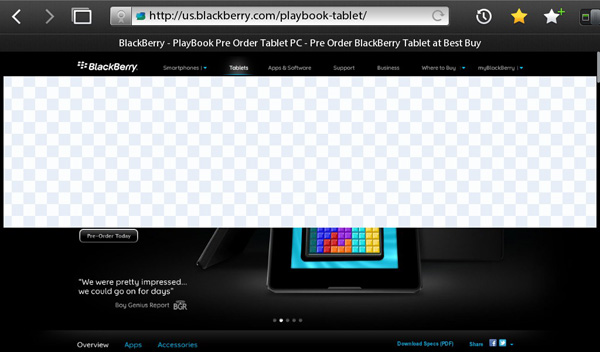
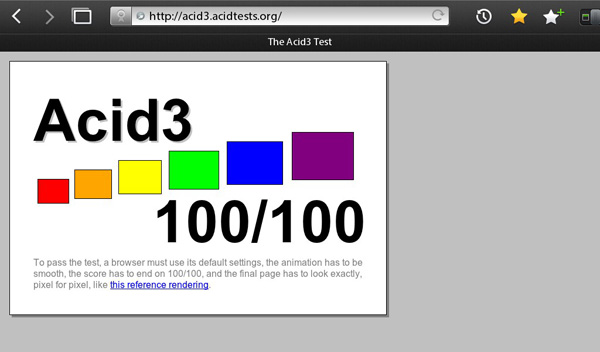
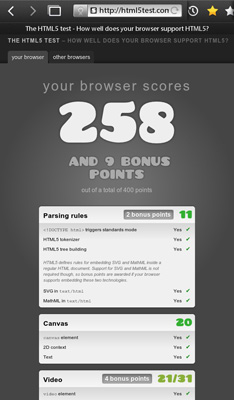
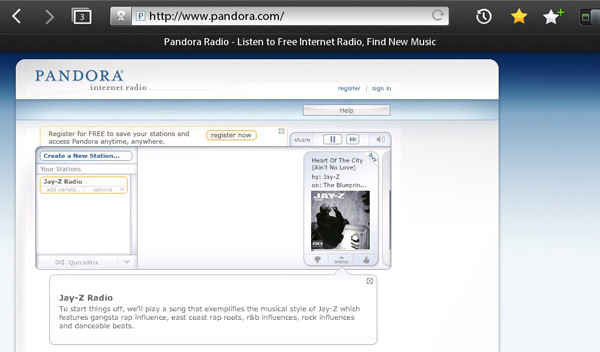








77 Comments
View All Comments
tipoo - Wednesday, April 13, 2011 - link
Did you have anything running in the background there? Gizmodo and Engadget both got within 10% of the iPad 2's score, the one here seems to be much slower.Anyways, as usual this is easily one of the best reviews.
Anand Lal Shimpi - Wednesday, April 13, 2011 - link
This may be a sunspider 0.9 vs. 0.91 issue, RIM said the same thing but 0.9 for some reason gives us the scores you see on the PlayBook vs. the competition (just re-ran again to be sure).I'm still waiting for a response from RIM as to why the relative performance comparison is much worse under 0.9. We've stuck with 0.9 to maintain backwards compatibility with our older smartphone numbers but if need be I'll switch over to 0.91 for tablets.
I'm running 0.91 numbers now, let's see what I come up with.
Thanks for reading and your kind words :)
Take care,
Anand
Anand Lal Shimpi - Thursday, April 14, 2011 - link
This is definitely a 0.9.1 vs. 0.9.0 issue. I'm not sure what is causing the PlayBook to choke on 0.9.0. I will update the article with 0.9.1 numbers as well.Take care,
Anand
8steve8 - Wednesday, April 13, 2011 - link
very high black levels on the screen is disappointing. (samoled/samoled+ is amazing)Also the bezel looks like its a huge percentage of the surface area, which is ugly.
7" seems to be the worst size, too big for pockets, too small for ideal consumption of entertainment or web.
The Base OS seems decent, although without email or calendar, we will have to give this another look in august.
That said, I still find tablets a niche device that few situations actually call for. Usually I find myself wanting a physical keyboard, or at least more screen space while typing. Also if you have to constantly hold it up, or buy a stand, why not use little laptops laptops, the screens don't need a stand : )
I find it a good device for a coffee table or any profession where you are standing/not at a table. Otherwise I'll stick to smartphone/laptop or desktop.
Solandri - Thursday, April 14, 2011 - link
The contrast ratio is the same as the iPad 2, so the high black levels is an artifact of the high white levels. In other words, if you turned down the brightness to match the max brightness of the iPad 2, the black levels should be the same as on the iPad 2.Along the same lines, I'm wondering what was the brightness setting during the battery tests. Usually reviewers do something like set brightness to half during the battery tests. But that seems a bit unfair since the Playbook's screen is so much brighter than the competition's. Wouldn't a more fair comparison be to set its brightness output to be the same number of nits as the iPad 2 in its battery test? In effect, think of the screen as the same as the iPad 2, but with the option to really crank up the brightness if you're outdoors in sunlight.
Anand Lal Shimpi - Thursday, April 14, 2011 - link
So our old method was to set everything to 50%, but lately I've been doing brightness matching right around ~150 nits on these tablets.Take care,
Anand
HilbertSpace - Wednesday, April 13, 2011 - link
Conclusion page:"I'm glad to see RIM experimenting with form factors. After using the Galaxy Tab 8.9 at CTIA I felt that may be the perfect balance between portability and functionality. The 7-inch PlayBook "
- something got mixed up there.
Aikouka - Wednesday, April 13, 2011 - link
I wonder if the browser would be better if you had the option to hide the menu/address bar?Anand Lal Shimpi - Thursday, April 14, 2011 - link
You actually do have the option to hide the menu/address bar, it's in the upper right corner of the browser. That does improve things but it also makes it less convenient to navigate to the next website.Take care,
Anand
jjj - Wednesday, April 13, 2011 - link
In the final words it would be worth reminding readers that it has no SD card slot, IMO a fundamental feature for phones/tablets nowdays.